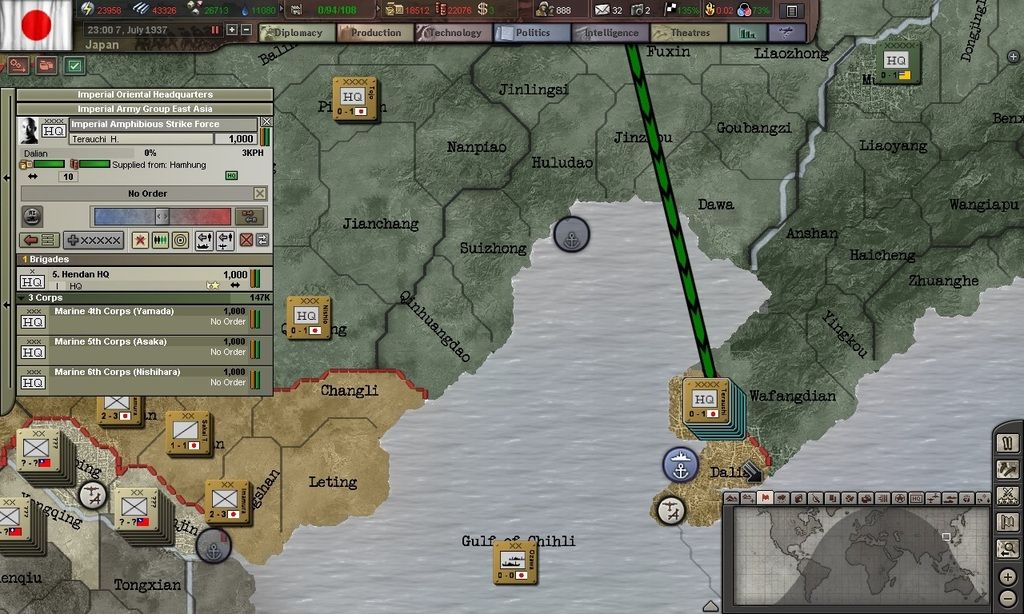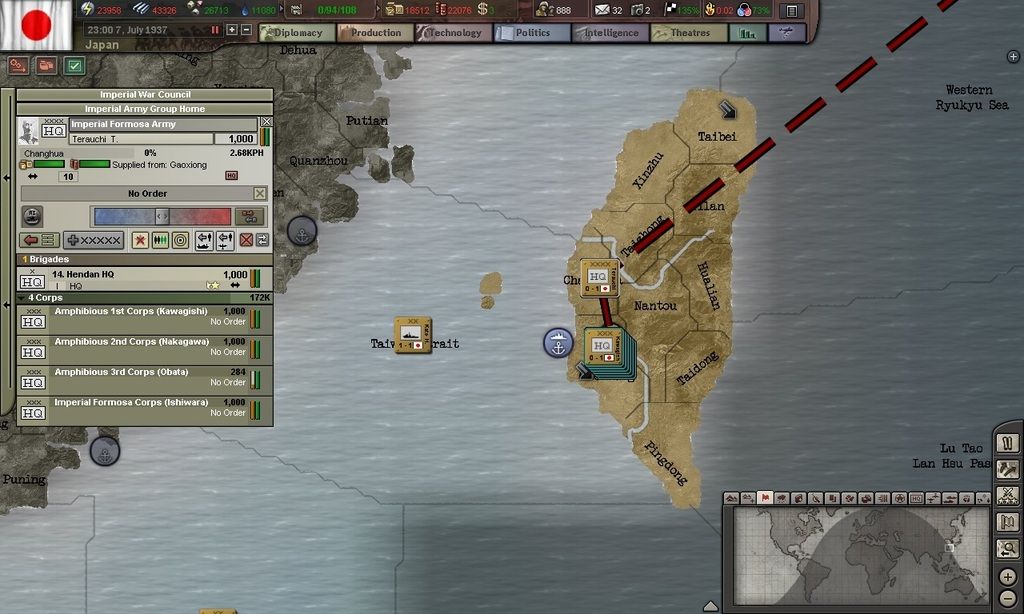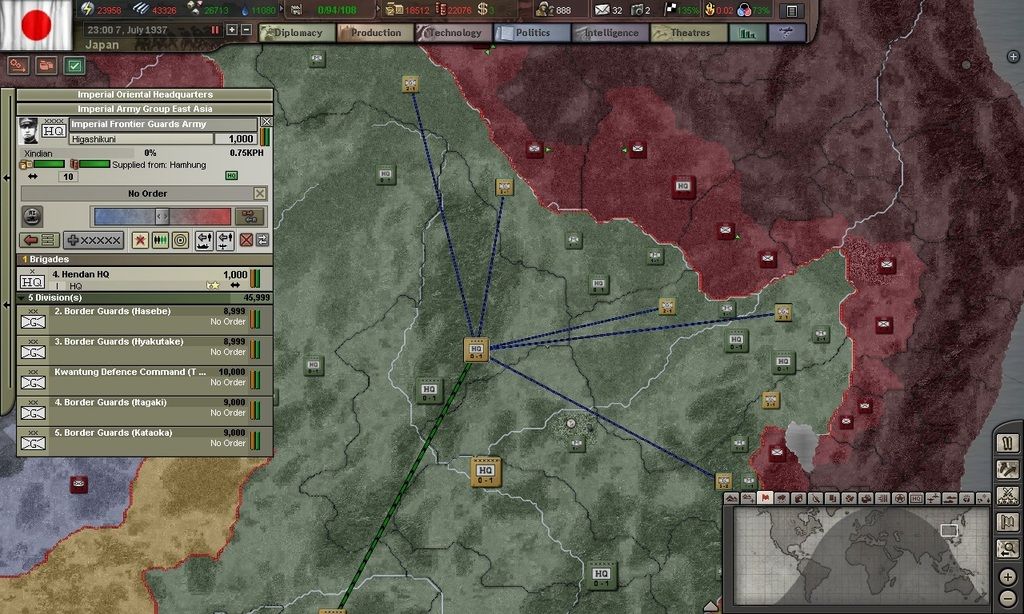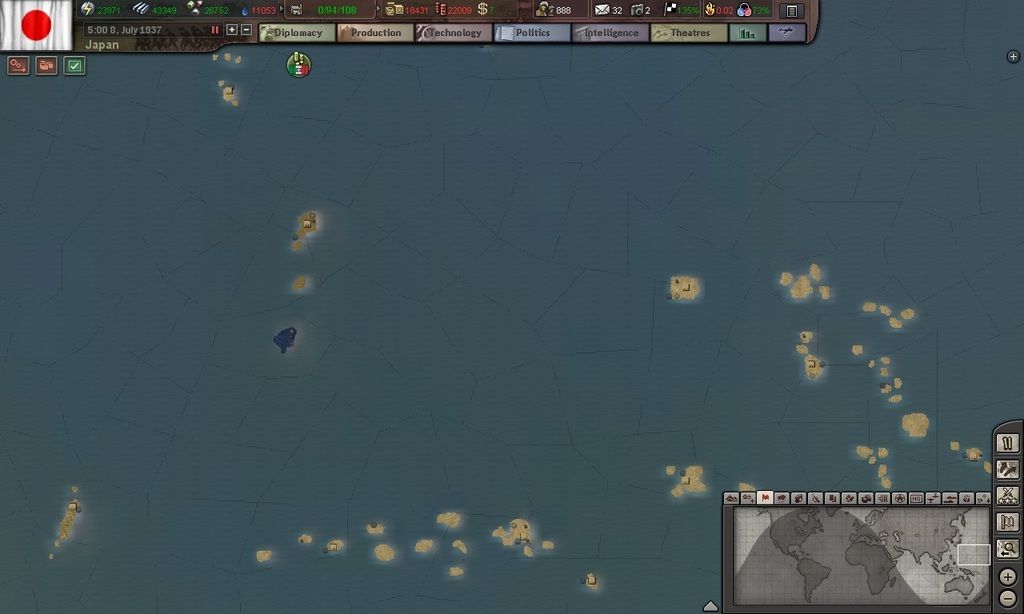Good day to the HOI Community!

Empire of the Rising Sun
Sinking of the world's largest battleship, the mighty Yamato, in 1945. This AAR has taken a similar fate.

Table of Contents
1. Chapter I : Review before for the commencement of hostilities against the Republic of China
2. Chapter II : First Sino-Japanese War ( July-October 1937 )
3. Chapter III : Operation Winter Storm, 1st phase of hostilities against the Soviet Union ( January - September 1939 )
4. Chapter IV : Second Sino-Japanese War ( September - December 1939 )
5. Chapter V : Soviet Winter Counteroffensive, lower part of post ( September 1939 - January 1940 )
6. Chapter VI : Soviet-Japanese War ( February 1940 - July 1940 )
7. Chapter VII : Soviet-Japanese War ( July 1940 - July 1941 )
https://en.wikipedia.org/wiki/Imperial_General_Headquarters


The Imperial General HQ making annoucements during WW2. Expect a lot of this from now on.
..........................................................................................................................................................................................................................................................
A short introduction :
The Japanese Empire: a 2600 year history
The Empire of Japan was founded in 660 BC by mythical Emperor Jimmu. According to a classical japanese historical chronicle, the male line can be traced back more than 2600 years. Since the 12th century and up until the mid 19th century, what is now known as Japan was a collection of quasi feudal states or Shogunates (around 250 autonomous domains when the system fell apart in 1868).

Social structure of pre-industrial Japan.
Theoretically, the Emperor owned all the land and had authority over his subjects. However, in practice, it did not work out like this. The Emperor was a ceremonial figure throughout the land, revered as a deity by the nation but without much effective power (the Emperor is actually the spiritual leader of the Shinto religion, the traditional religion of Japan, and resembles the function of the Pope for Christianity).
The real power lay in the figure of the Shogun, who was like a regional military governor-warlord and had local autonomy and powers. They fought between each other a lot and sometimes rebelled against Imperial power. But there was also a strict hierarchy in which one lord pledged loyalty to a greater ruler, such as a Samurai fighting in battle for a Shogun, similar to lords, vassals and feudal knights in Europe.

The Imperial Standard

The Empire of Japan at its zenith in 1942.
In 1868, the Meiji Restoration ocurred, which stripped the last Shogun of his authority and placed power back in the Emperor :
The Emperor of Japan announces to the sovereigns of all foreign countries and to their subjects that permission has been granted to the Shogun Tokugawa Yoshinobu to return the governing power in accordance with his own request. We shall henceforward exercise supreme authority in all the internal and external affairs of the country. Consequently the title of Emperor must be substituted for that of Taikun, in which the treaties have been made. Officers are being appointed by us to the conduct of foreign affairs. It is desirable that the representatives of the treaty powers recognize this announcement.
—Mutsuhito, January 3, 1868

Emperor Meiji after the restoration of Imperial power.
This ended the feudal period and ushered in a new era of westernization, industrialization and militarization. This progress happened very quickly and by the late 19th and early 20th century, with heavy investment in the military and advisors coming from all over the western nations to train the armed and naval forces, the development of a national Industry and the opening of the markets to the outside world, Imperial Japan was strong enough to compete on the world stage with the great western powers (an insane achievement in its own) and begun to seek to expand its sphere of influence with carefully timed strategies planned over decades.
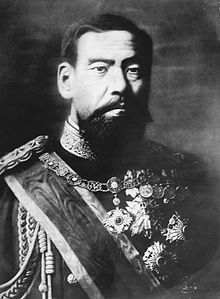
His Majesty The Emperor, in his fifties.
This path could only lead to a military clash between the Empire and its main geopolitical rival in Asia - Imperial China, and also the Western powers, for dominance of the continent and its resources.
A brave new world
In 1894, the Empire faced off China for political control of the Korean Peninsula in the First Sino-Japanese War. Most European powers felt that the Qing dinasty was going to prevail over newcomer Japan. After all, Imperial China was this timeless Asian leviathan, the most populous country on Earth and possesed vast quantities of resources and industry. They were also pursuing an aggressive modernization program of the state and its armed forces. But the massive defeat suffered by the Qing Dinasty during the war demonstrated to the world that China had failed in its efforts to institute badly needed political reforms and modernize its military, steps taken after it was humiliated by the Western colonial powers (Unequal Treaties) numerous times during the 19th century. The favourable outcome for Tokyo also meant a lot of prestige in the eyes of other countries. Lastly, for the first time in human history, the centre of power in East Asia had shifted from China, to Japan.

Chinese general surrendering Pyongyang.
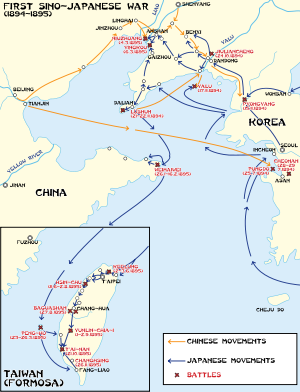
Major campaigns of the war.
Around this time, the Japanese invaded the Republic of Formosa, a rebel Qing-Chinese government holdout based in Taiwan; after a brief battle, they overran the defenders and annexed Formosa (this historical episode is not unlike how the KMT retreated to Taiwan when they lost the civil war in `49 against the Reds and they still have their national redoubt there - will the chinese reds one day invade the 'rebel' KMT government in Formosa? That's the million dollar question today).

This is how the entire world perceived Japan's victory over China at the time . In this drawing, Punch, an influential 19th century british satire magazine, depicting the defeat of 'big' China by 'small' Japan.

Chinese delegation, accompanied by their foreign military advisors, surrendering to the Japanese.
Once Imperial China was defeated, Japan's confidence in its armed forces was, justifiably, at an all time high. However, the spoils of war it had rightly won with blood in China had to be given back because of Russian, German and French diplomatic pressure (Triple Intervention, just three days after the peace was signed!). The Russians especially, as they had much more interests in the Far East. Their problem was that Vladivostok is a summer port only and the russians needed a warm water port all year round for maritime trade and to harbor their naval forces. The Empire was not in a position to fight 3 major european powers simultaneously. According to a source listed in Wikipedia: ''The three european powers had 38 warships with a displacement of 95,000 tons already deployed in East Asia, whereas the Imperial Navy had only 31 warships in total with a displacement of 57,000 tons''.
So, the europeans forced Japan to give up Port Arthur (Liaodong peninsula), but the Russians deployed their forces there almost immediately after the Japanese left, causing great surprise and consternation among japanese leadership. Many people in Japan felt that the winning party was treated like the defeated nation. They felt cheated out of their deserved glory.
The Spirit of Japan unleashed
This humiliation at the hands of the Europeans powers forced Japan to rethink its strategy but not its will to Triumph. They signed an alliance with the British in 1902 to have some military and diplomatic leverage against Russia and other western powers to avoid repeating an episode similar to the Triple Intervention. Article 3 of the Treaty stated that the UK (or viceversa) had to support Japan if it found itself at war with more than one Power. As the British Royal Navy was the biggest and best, this served as a deterrent to any alliance (especially the Russo-French Alliance of 1894) in case it would want to go to war against Japan.
The Empire wanted to keep on expanding its territory and influence beyond their newly found conquests and they found an adversary in Czarist Russia just 10 years after the war with China, during the Russo-Japanese War of 1904. The causes of this war was Russia's constant delay and unwillingness to negotiate the limits of their respective spheres of influence in Manchuria and Korea. Russia was just buying time diplomatically to build up militarily in these areas to defeat Japan in the future. Such a great risk to national security could not be ignored.

The defeat of Russia greatly affected the state and the government shifted its attention to the Balkans, this later becoming one of the causes of WW1.
When the Japanese leadership realized this, they launched a surprise attack on the Russian Pacific (Far East) Fleet, without providing a formal declaration of war, on Port Arthur (lots of similarity with Pear Harbor). The Czar was in shock, he could not believe the Japanese could attack without declaring war first. Throughout the war, the Japanese were always on the offensive and had the initiative. This resulted in a long string of Imperial victories during the conflict. Their efficiency was also devastating at sea. The Russians lost 2 fleets out of 3, the Far East and Baltic Fleet were annihilated, only the weak Black Sea Fleet remained.

Russo-Japanese Theatre of War. Note the national flags, indicating foreign colonial possesions in China.
This was the first time in modern history that an Asian state had beaten a major European power. The entire world was shocked. Many western colonial powers started to reassess the growing power of Japan. The news of Imperial victory was received with joy and hopefulness all across Asia and its many people. A lot of nations started to feel the fever of nationalism and identified with the Japanese people and their struggle. Even the Chinese, who had been at war with Japan one decade earlier, claimed that the Japanese victory was also their victory. Finally, an Asian savior had come to protect and guard Asia from western imperialism (or so they thought). If the Japanese had done it, maybe they too could do it one day.
.jpg)
The Russian Empire surrendering to Japanese diplomats, albeit, under very lax terms, despite the military outcome of the war decisively favouring the japanese position.
However, at the negotiating table, mediated by the U.S., Theodore Rooselvelt decided to side with the Czar and supported his claims of not paying reparations to Japan. And to add insult to injury, some territorial gains during the war would also be returned to Russia like the northern half of Sakhalin Island because of US pressure during the negotiations. Many in Japan felt that their victorious country was being treated like a second-rate power, despite winning many incredible battles and enduring much hardship against Russia. This incident convinced many Imperial policy makers that the U.S. had interests and ambitions of their own in Asia. Japan had won the War but it lost the Peace.
Rise of a Great Asian Power
Once again, ten years later (1894 China, 1904 Russia), in 1914, Japan entered WW1 as a member of the Allies and started to conquer the german colonies in Asia like the port of Qingdao and its pacific possesions. As a result, the empire was enlarged and due to WW1 exports, Japan became for the first time a creditor nation and was not a debtor nation anymore. However, during the peace negotiations in Versailles, even though Japan was accepted as a great power in post-war geopolitics, the Western powers, mostly the U.S. and UK, denied the Japanese people their fair request when they asked for a Racial Equality Proposal.
This angered many japanese nationalists and there were riots all over the country. The Empire had been mistreated many times by the powers of the West now and militarism and ultranationalism feelings started to develop within the government and society. The wrath of the nation would be felt upon the world years later.

A month after WW1 started, the Japanese conducted the world's first naval-launched air raids employing the aircraft carrier 'Wakamiya'.
In a way, this limited, western imposed victory was not enough for an Allied Japan and the Empire would gradually turn to the dark side to become more powerful than their former partners.
In the last years of WW1, with the collapse of the Russian autocracy and the rise of Bolshevism, Japan sent a Siberian Expeditionary Force of some 70,000 soldiers as part of a larger 100,000 Allied army to help the White russian forces in the Civil war against the Communists. There were more elaborate plans for Japan however, behind the curtains. The policy makers in Tokyo felt that the absence of a strong russian government could present an opportunity to settle the Russian question in the Far East definitely and create a buffer Siberian state between these powers. The defeat of the White forces, the mistrust of the allies of Japan when they deployed such high numbers of troops in Siberia, the astronomical cost of the war for Japan and a decrease in national support for the war, led Japan to withdraw its forces and abandon their territorial ambitions.

Japanese lithograph depicting the capture of Blagoveschensk.
During and after WW1, with the West distracted from Asia by the critical affairs going on in Europe at the time, Japan started to take on an increasingly militaristic role in East Asia and China. There were many incidents between China and Japan during these interwar years. In 1931, the Mukden Incident occurred and Japan invaded northeast China (Manchuria) setting up the puppet state of Manchukuo, installing the last emperor of China, Puyi as its Head of State. Due to Japan's agressive policies, it was only a matter of time before they clashed again with Republican China...
...............................................................................The Road to War ...............................................................................
On the Balance of Power in the Asia-Pacific Region, or a brief strategic military-economical assessment of the geopolitical prospects of the Yamato Race:
It is now 1936 and our geographic strategical situation is very dire. In the north, we have the Soviets and their strong armored columns massed on the border with Manchuria. In south Asia and Oceania, the British and their Commonwealth, and the French and Dutch Empire possess many vital resources and their naval forces are quite strong. To the west, we have the Republic of China and their huge army, supported by its lesser vassals (Com. China, Shanxi, Xibei San Ma, etc). In the Pacific, the mighty American Navy patrols the high seas.
As is evident, our potential enemies are not to be underestimated as they posses huge industries to back up their armed forces. Also, their hostility towards our cause, cannot be ignored. If our Empire is to prosper and establish a new continental order, surrounded by these powerful states, we need to skillfully develop a grand strategy based on the might of our armed forces and a long due overhaul of our national industry.
If we desire to expand to the West, against China and the USSR (approx. 700 million combined population against our 73 million loyal Imperial citizens and 60 million hard working but unreliable colonial subjects), we need to invest most of our industry towards creating a big, modern and effective land force to decisively defeat these two nations, one at a time of course. If we direct our gaze to the South, we shall need a huge, state of the art Carrier based fleet, supported by some capital ships and light vessels to challenge the naval power of the Allies - UK/COMWLT, FRA, NED, (around 600 million people).
The USA, with a population of 133 million, endless natural resources and the biggest national industry in the world, is a hegemon on its own. To face the Americans and their superior industrial capacity, we shall have to conquer ALL of the Pacific islands in one rapid action offensive campaign, then redeploy our air forces here and build a safety air network around these islands for two main strategic reasons: to prevent the U.S. navy from entering the western Pacific Ocean so that it cannot effectively engage our smaller navy or try to sink our vital supply convoys, and to shield the Imperial Home Islands from american heavy bombers or a hypothetical amphibious invasion.

Our Empire is surrounded by potential adversaries. We must expand to secure our borders and prosperity.
On Global Policy and Strategic objectives necessary to project the Power of Our Empire, or how to secure Hegemony in East Asia:
Our Empire shall not agree to any sort of military or political alliance with any nation that has territorial, colonial or military interests of any degree in Asia or in nearby adjacent zones that might represent a threat to the political stability of the continent and our Nation. Also, We shall not form any kind of security alliance with any state that could potentially involve the Empire in war against neighboring powers. These doctrines serve the purpose of protecting Japan from foreign aggression and to prevent the entry of Japan into a war that it is not prepared or interested to fight in.
An outline of Our strategic objectives, in no particular order of execution, to be achieved during two decades (36-56):
1) Secure and absorb the Republic of China and surrounding states into the Empire.
2) Defeat the Soviet Union and annex its Far East territories.
3) Liberate Asia and its nations of any foreign imperial powers.
4) Conquer and annex the vast lands of Oceania.
5) Invade all the Pacific Islands, defeat the United States Navy and force the U.S. to negotiate peace.
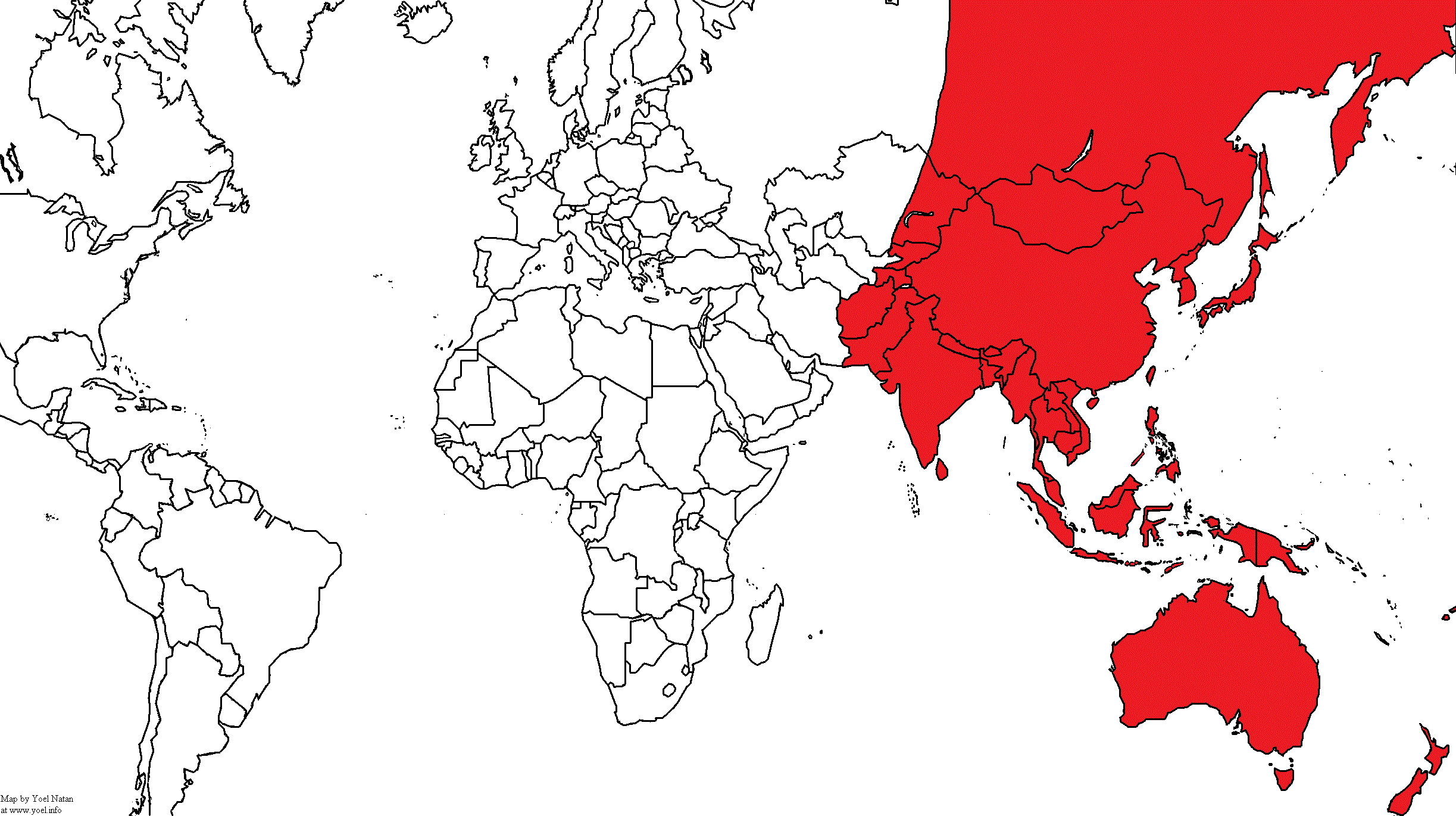
Imperial ambitions for Asia: Our Destiny awaits for us!
So far, this is the basic framework of Our future war plans. We shall develop the operational execution methods in the next update, so be sure to check them out!

Empire of the Rising Sun
Game difficulty: VERY HARD
Version: TFH
No cheats or gamey conduct allowed.
-- Sadly, an alcoholic drink (a cuba libre) fell on my laptop some time ago wiping out its information. With it, was lost HOI3 and all the save games. For this reason, I have to announce that this AAR is unfortunately over. However, to make up for it I will be writing a new and better AAR soon, first I need to decide to the country. If you have any ideas, please post them here.
Version: TFH
No cheats or gamey conduct allowed.
-- Sadly, an alcoholic drink (a cuba libre) fell on my laptop some time ago wiping out its information. With it, was lost HOI3 and all the save games. For this reason, I have to announce that this AAR is unfortunately over. However, to make up for it I will be writing a new and better AAR soon, first I need to decide to the country. If you have any ideas, please post them here.
Sinking of the world's largest battleship, the mighty Yamato, in 1945. This AAR has taken a similar fate.

Table of Contents
- Introduction : Imperial Destiny
- Preface : Order of War by Strategic priority
1. Chapter I : Review before for the commencement of hostilities against the Republic of China
2. Chapter II : First Sino-Japanese War ( July-October 1937 )
3. Chapter III : Operation Winter Storm, 1st phase of hostilities against the Soviet Union ( January - September 1939 )
4. Chapter IV : Second Sino-Japanese War ( September - December 1939 )
5. Chapter V : Soviet Winter Counteroffensive, lower part of post ( September 1939 - January 1940 )
6. Chapter VI : Soviet-Japanese War ( February 1940 - July 1940 )
7. Chapter VII : Soviet-Japanese War ( July 1940 - July 1941 )
This is my first AAR, so in advance, please forgive any mistakes I make. Correct me wherever you feel is due. Also, this is not an interactive AAR at all, but if you have helpful, good or interesting military suggestions during the campaign, please post them and I might just be inspired to execute them within my goal limits. I will try to update on a daily or at most, a weekly basis in real life time. In game time, I will update monthly if at war and every 6 months if at peace. Exceptions will be made for any interesting events. And lastly, this AAR will be from the point of view of a fictional and nameless senior member of the Chief of Staff of the Imperial General Headquarters.https://en.wikipedia.org/wiki/Imperial_General_Headquarters
The Imperial General HQ making annoucements during WW2. Expect a lot of this from now on.
A short introduction :
The Japanese Empire: a 2600 year history
The Empire of Japan was founded in 660 BC by mythical Emperor Jimmu. According to a classical japanese historical chronicle, the male line can be traced back more than 2600 years. Since the 12th century and up until the mid 19th century, what is now known as Japan was a collection of quasi feudal states or Shogunates (around 250 autonomous domains when the system fell apart in 1868).

Social structure of pre-industrial Japan.
The real power lay in the figure of the Shogun, who was like a regional military governor-warlord and had local autonomy and powers. They fought between each other a lot and sometimes rebelled against Imperial power. But there was also a strict hierarchy in which one lord pledged loyalty to a greater ruler, such as a Samurai fighting in battle for a Shogun, similar to lords, vassals and feudal knights in Europe.

The Imperial Standard
By the very nature of their way of life, living in islands, they were natural born sailors and had a very strong maritime culture. In fact, the Empire of Japan during WW2 was one of the largest pure thalassocracies of history. The geography of their home islands is a military advantage as it makes it very hard for enemies to invade the mainland without a strong navy but it also poses a problem for a state like Japan that wants to industrialize and reach western power levels, as there aren`t that many resources lying around to fire up a major industrial powerhouse.
The Empire of Japan at its zenith in 1942.
In 1868, the Meiji Restoration ocurred, which stripped the last Shogun of his authority and placed power back in the Emperor :
The Emperor of Japan announces to the sovereigns of all foreign countries and to their subjects that permission has been granted to the Shogun Tokugawa Yoshinobu to return the governing power in accordance with his own request. We shall henceforward exercise supreme authority in all the internal and external affairs of the country. Consequently the title of Emperor must be substituted for that of Taikun, in which the treaties have been made. Officers are being appointed by us to the conduct of foreign affairs. It is desirable that the representatives of the treaty powers recognize this announcement.
—Mutsuhito, January 3, 1868

Emperor Meiji after the restoration of Imperial power.
This ended the feudal period and ushered in a new era of westernization, industrialization and militarization. This progress happened very quickly and by the late 19th and early 20th century, with heavy investment in the military and advisors coming from all over the western nations to train the armed and naval forces, the development of a national Industry and the opening of the markets to the outside world, Imperial Japan was strong enough to compete on the world stage with the great western powers (an insane achievement in its own) and begun to seek to expand its sphere of influence with carefully timed strategies planned over decades.

His Majesty The Emperor, in his fifties.
This path could only lead to a military clash between the Empire and its main geopolitical rival in Asia - Imperial China, and also the Western powers, for dominance of the continent and its resources.
A brave new world
In 1894, the Empire faced off China for political control of the Korean Peninsula in the First Sino-Japanese War. Most European powers felt that the Qing dinasty was going to prevail over newcomer Japan. After all, Imperial China was this timeless Asian leviathan, the most populous country on Earth and possesed vast quantities of resources and industry. They were also pursuing an aggressive modernization program of the state and its armed forces. But the massive defeat suffered by the Qing Dinasty during the war demonstrated to the world that China had failed in its efforts to institute badly needed political reforms and modernize its military, steps taken after it was humiliated by the Western colonial powers (Unequal Treaties) numerous times during the 19th century. The favourable outcome for Tokyo also meant a lot of prestige in the eyes of other countries. Lastly, for the first time in human history, the centre of power in East Asia had shifted from China, to Japan.

Chinese general surrendering Pyongyang.

Major campaigns of the war.
Around this time, the Japanese invaded the Republic of Formosa, a rebel Qing-Chinese government holdout based in Taiwan; after a brief battle, they overran the defenders and annexed Formosa (this historical episode is not unlike how the KMT retreated to Taiwan when they lost the civil war in `49 against the Reds and they still have their national redoubt there - will the chinese reds one day invade the 'rebel' KMT government in Formosa? That's the million dollar question today).

This is how the entire world perceived Japan's victory over China at the time . In this drawing, Punch, an influential 19th century british satire magazine, depicting the defeat of 'big' China by 'small' Japan.

Chinese delegation, accompanied by their foreign military advisors, surrendering to the Japanese.
Once Imperial China was defeated, Japan's confidence in its armed forces was, justifiably, at an all time high. However, the spoils of war it had rightly won with blood in China had to be given back because of Russian, German and French diplomatic pressure (Triple Intervention, just three days after the peace was signed!). The Russians especially, as they had much more interests in the Far East. Their problem was that Vladivostok is a summer port only and the russians needed a warm water port all year round for maritime trade and to harbor their naval forces. The Empire was not in a position to fight 3 major european powers simultaneously. According to a source listed in Wikipedia: ''The three european powers had 38 warships with a displacement of 95,000 tons already deployed in East Asia, whereas the Imperial Navy had only 31 warships in total with a displacement of 57,000 tons''.
So, the europeans forced Japan to give up Port Arthur (Liaodong peninsula), but the Russians deployed their forces there almost immediately after the Japanese left, causing great surprise and consternation among japanese leadership. Many people in Japan felt that the winning party was treated like the defeated nation. They felt cheated out of their deserved glory.
The Spirit of Japan unleashed
This humiliation at the hands of the Europeans powers forced Japan to rethink its strategy but not its will to Triumph. They signed an alliance with the British in 1902 to have some military and diplomatic leverage against Russia and other western powers to avoid repeating an episode similar to the Triple Intervention. Article 3 of the Treaty stated that the UK (or viceversa) had to support Japan if it found itself at war with more than one Power. As the British Royal Navy was the biggest and best, this served as a deterrent to any alliance (especially the Russo-French Alliance of 1894) in case it would want to go to war against Japan.
The Empire wanted to keep on expanding its territory and influence beyond their newly found conquests and they found an adversary in Czarist Russia just 10 years after the war with China, during the Russo-Japanese War of 1904. The causes of this war was Russia's constant delay and unwillingness to negotiate the limits of their respective spheres of influence in Manchuria and Korea. Russia was just buying time diplomatically to build up militarily in these areas to defeat Japan in the future. Such a great risk to national security could not be ignored.

The defeat of Russia greatly affected the state and the government shifted its attention to the Balkans, this later becoming one of the causes of WW1.
When the Japanese leadership realized this, they launched a surprise attack on the Russian Pacific (Far East) Fleet, without providing a formal declaration of war, on Port Arthur (lots of similarity with Pear Harbor). The Czar was in shock, he could not believe the Japanese could attack without declaring war first. Throughout the war, the Japanese were always on the offensive and had the initiative. This resulted in a long string of Imperial victories during the conflict. Their efficiency was also devastating at sea. The Russians lost 2 fleets out of 3, the Far East and Baltic Fleet were annihilated, only the weak Black Sea Fleet remained.

Russo-Japanese Theatre of War. Note the national flags, indicating foreign colonial possesions in China.
This was the first time in modern history that an Asian state had beaten a major European power. The entire world was shocked. Many western colonial powers started to reassess the growing power of Japan. The news of Imperial victory was received with joy and hopefulness all across Asia and its many people. A lot of nations started to feel the fever of nationalism and identified with the Japanese people and their struggle. Even the Chinese, who had been at war with Japan one decade earlier, claimed that the Japanese victory was also their victory. Finally, an Asian savior had come to protect and guard Asia from western imperialism (or so they thought). If the Japanese had done it, maybe they too could do it one day.
.jpg)
The Russian Empire surrendering to Japanese diplomats, albeit, under very lax terms, despite the military outcome of the war decisively favouring the japanese position.
However, at the negotiating table, mediated by the U.S., Theodore Rooselvelt decided to side with the Czar and supported his claims of not paying reparations to Japan. And to add insult to injury, some territorial gains during the war would also be returned to Russia like the northern half of Sakhalin Island because of US pressure during the negotiations. Many in Japan felt that their victorious country was being treated like a second-rate power, despite winning many incredible battles and enduring much hardship against Russia. This incident convinced many Imperial policy makers that the U.S. had interests and ambitions of their own in Asia. Japan had won the War but it lost the Peace.
Rise of a Great Asian Power
Once again, ten years later (1894 China, 1904 Russia), in 1914, Japan entered WW1 as a member of the Allies and started to conquer the german colonies in Asia like the port of Qingdao and its pacific possesions. As a result, the empire was enlarged and due to WW1 exports, Japan became for the first time a creditor nation and was not a debtor nation anymore. However, during the peace negotiations in Versailles, even though Japan was accepted as a great power in post-war geopolitics, the Western powers, mostly the U.S. and UK, denied the Japanese people their fair request when they asked for a Racial Equality Proposal.
This angered many japanese nationalists and there were riots all over the country. The Empire had been mistreated many times by the powers of the West now and militarism and ultranationalism feelings started to develop within the government and society. The wrath of the nation would be felt upon the world years later.

A month after WW1 started, the Japanese conducted the world's first naval-launched air raids employing the aircraft carrier 'Wakamiya'.
In a way, this limited, western imposed victory was not enough for an Allied Japan and the Empire would gradually turn to the dark side to become more powerful than their former partners.
In the last years of WW1, with the collapse of the Russian autocracy and the rise of Bolshevism, Japan sent a Siberian Expeditionary Force of some 70,000 soldiers as part of a larger 100,000 Allied army to help the White russian forces in the Civil war against the Communists. There were more elaborate plans for Japan however, behind the curtains. The policy makers in Tokyo felt that the absence of a strong russian government could present an opportunity to settle the Russian question in the Far East definitely and create a buffer Siberian state between these powers. The defeat of the White forces, the mistrust of the allies of Japan when they deployed such high numbers of troops in Siberia, the astronomical cost of the war for Japan and a decrease in national support for the war, led Japan to withdraw its forces and abandon their territorial ambitions.

Japanese lithograph depicting the capture of Blagoveschensk.
During and after WW1, with the West distracted from Asia by the critical affairs going on in Europe at the time, Japan started to take on an increasingly militaristic role in East Asia and China. There were many incidents between China and Japan during these interwar years. In 1931, the Mukden Incident occurred and Japan invaded northeast China (Manchuria) setting up the puppet state of Manchukuo, installing the last emperor of China, Puyi as its Head of State. Due to Japan's agressive policies, it was only a matter of time before they clashed again with Republican China...
...............................................................................The Road to War ...............................................................................
On the Balance of Power in the Asia-Pacific Region, or a brief strategic military-economical assessment of the geopolitical prospects of the Yamato Race:
It is now 1936 and our geographic strategical situation is very dire. In the north, we have the Soviets and their strong armored columns massed on the border with Manchuria. In south Asia and Oceania, the British and their Commonwealth, and the French and Dutch Empire possess many vital resources and their naval forces are quite strong. To the west, we have the Republic of China and their huge army, supported by its lesser vassals (Com. China, Shanxi, Xibei San Ma, etc). In the Pacific, the mighty American Navy patrols the high seas.
As is evident, our potential enemies are not to be underestimated as they posses huge industries to back up their armed forces. Also, their hostility towards our cause, cannot be ignored. If our Empire is to prosper and establish a new continental order, surrounded by these powerful states, we need to skillfully develop a grand strategy based on the might of our armed forces and a long due overhaul of our national industry.
If we desire to expand to the West, against China and the USSR (approx. 700 million combined population against our 73 million loyal Imperial citizens and 60 million hard working but unreliable colonial subjects), we need to invest most of our industry towards creating a big, modern and effective land force to decisively defeat these two nations, one at a time of course. If we direct our gaze to the South, we shall need a huge, state of the art Carrier based fleet, supported by some capital ships and light vessels to challenge the naval power of the Allies - UK/COMWLT, FRA, NED, (around 600 million people).
The USA, with a population of 133 million, endless natural resources and the biggest national industry in the world, is a hegemon on its own. To face the Americans and their superior industrial capacity, we shall have to conquer ALL of the Pacific islands in one rapid action offensive campaign, then redeploy our air forces here and build a safety air network around these islands for two main strategic reasons: to prevent the U.S. navy from entering the western Pacific Ocean so that it cannot effectively engage our smaller navy or try to sink our vital supply convoys, and to shield the Imperial Home Islands from american heavy bombers or a hypothetical amphibious invasion.

Our Empire is surrounded by potential adversaries. We must expand to secure our borders and prosperity.
On Global Policy and Strategic objectives necessary to project the Power of Our Empire, or how to secure Hegemony in East Asia:
Our Empire shall not agree to any sort of military or political alliance with any nation that has territorial, colonial or military interests of any degree in Asia or in nearby adjacent zones that might represent a threat to the political stability of the continent and our Nation. Also, We shall not form any kind of security alliance with any state that could potentially involve the Empire in war against neighboring powers. These doctrines serve the purpose of protecting Japan from foreign aggression and to prevent the entry of Japan into a war that it is not prepared or interested to fight in.
An outline of Our strategic objectives, in no particular order of execution, to be achieved during two decades (36-56):
1) Secure and absorb the Republic of China and surrounding states into the Empire.
2) Defeat the Soviet Union and annex its Far East territories.
3) Liberate Asia and its nations of any foreign imperial powers.
4) Conquer and annex the vast lands of Oceania.
5) Invade all the Pacific Islands, defeat the United States Navy and force the U.S. to negotiate peace.

Imperial ambitions for Asia: Our Destiny awaits for us!
Last edited:
- 10
- 5
- 2












